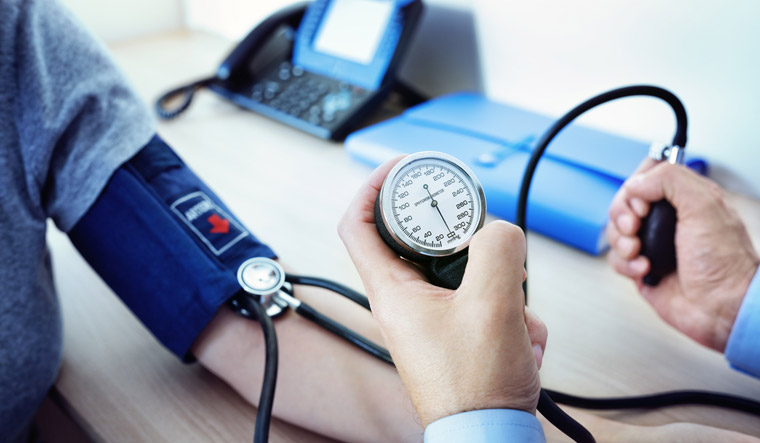By 2024, over 15 crore people will get treatment for hypertension, and be able to protect themselves from heart attack, stroke and kidney failure.
At least that’s what the Union health ministry is planning, in its effort to achieve an ambitious target of 25 per cent reduction in those suffering from high blood pressure. This, the ministry plans to reach by 2025.
To that end, the Centre is planning to scale up its India Hypertension Control Initiative to 100 districts, with at least two districts in each state covered under the screening, treatment and control of high BP programme. The IHCI, a joint venture between the Indian Council of Medical Research, WHO and the Union health ministry, was launched in November 2017 in 25 districts in five states. More than three lakh patients with high blood pressure were enrolled in government health facilities in the states of Punjab, Madhya Pradesh, Kerala, Telangana and Maharashtra.
Buoyed by the "positive" results from the programme in controlling the disease in these patients —albeit with a lot of challenges—the ICMR is planning to take the programme to 75 more districts, across the country. The task before them is huge, according to Dr Prabhdeep Kaur, who is part of the core team of the IHCI and a senior scientist at ICMR. "Going by the government's own survey, 20 crore people in the country are suffering from high BP. Out of these, 10 crore people are not aware of their ailment. Among those who are aware of their disease, the big problem is that they wouldn't take medication, or even if they take medication, they fall out of the follow-up process, or they take different medicines that affects their treatment," Kaur said.
To resolve some of these issues, the IHCI has a ready treatment protocol including the three medicines that patients are to be given by a doctor at a primary centres, the specifications for procuring good quality BP monitors for accurate readings and the correct process of diagnosing high blood pressure. To design the programme, Kaur said that the scientists at ICMR looked at various models, including the one that is followed in Thailand, with the best detection and control rates for high blood pressure in the world.
By scaling up this initiative, the idea is to have patient-centered services to improve patient support, reduce reliance on bigger hospitals away from home, increase utilization of the sub-centres and primary health centers, and reduce the travel and expenditure on medicines. Emphasis is also on the monitoring and follow-up of patients.
Heart attack and stroke are the leading cause of death globally, including India. Uncontrolled high blood pressure or hypertension is the most common reason for sudden heart attack or stroke. In India, one in four adults has high blood pressure. Of them, only one in 10 have their blood pressure under control. As a result, a large number of people develop heart attacks, strokes, and kidney failure while in the productive years of life. Control rates, as an ICMR study has found out, have remained abysmally low in the country.
Dr Balram Bhargava, Secretary, Department of Health Research and Director General, ICMR, said, “With approximately 20 crore adult patients with hypertension in India, more support from all quarters will be needed to help the government achieve this target. IHCI is a model initiative towards that. Prevention and treatment of hypertension is far safer for patients than expensive interventions like bypass surgery and dialysis.”



